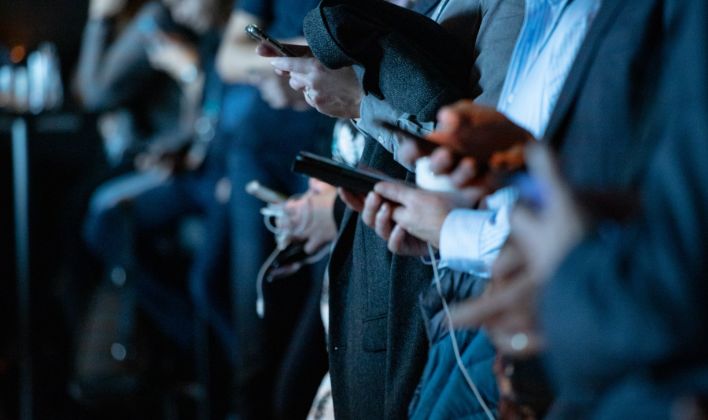The right to digital disconnection is currently experiencing a moment of significant growth, at least as a topic of debate and observation: an increasing number of companies and employees are focusing their attention on implementing it and, of course, enabling it. In this post, we are going to look at this key aspect for the psychological well-being of employees.
What is the right to digital disconnection for employees?
Checking mail and answering messages, answering calls, continuing to work in front of the computer beyond working hours, solving problems that arise at the wrong time instead of devoting energy and involvement to what is happening outside of work. These and other examples show the opposite of what we would call a proper digital disconnection, that is: not working (our work is increasingly technological, more through keyboards and screens) outside our official working hours.
Sometimes it is the employee who boycotts their own right to digital disconnection, due to emergencies, poor organization, or an inadequate sense of involvement at work. However, it is often inertia, habits, and bad practices that are widespread throughout the company, or carried out by those who should set the best example (managers) that continually prevent employees from asserting their right to digital disconnection.
Understanding the right to digital disconnection is not an end in itself, but a means to enhance our psychological well-being in general and our occupational health in particular, as well as the company’s productivity.

A healthy work-life balance
The usual separation between work and “personal” life is more metaphorical than real. However, this should not serve as a justification for the professional aspect to invade other areas of daily life, permeating with its duties, tasks, and tools outside of its own time.
This is the idea behind the employees’ right to digital disconnection: as employees, we have the right to be free of our professional screens outside working hours.
Therefore, we must understand it as a right, something that must be acknowledged, that we must claim and that has been included in labor legislation for several years now, affecting all work contexts: both those who perform their tasks in person and those who work remotely.
Otherwise, we feel invaded by work, merged with it. Our time (i.e., the activities we carry out during our time) is fully dedicated to work, even if it is “on-call”. Moreover, our identity is swallowed up: we are solely and exclusively employees because we are employees 24 hours a day, even when we are not working.
What prevents employees’ right to digital disconnection?
The company’s commitment to digital connectivity beyond official working hours hides inefficient management of internal communication and an abusive work methodology.
This style is therefore ineffective in terms of employees’ psychological well-being. It increases fatigue, weakens the employee’s relationship with their tasks, their managers, their colleagues, and, ultimately, with the company. It also generates complaints (expressed directly or indirectly). For these reasons alone, it is something that the company should avoid, instilling in the employees the need and usefulness of respecting work times and making it easier for them to do so.
Remote work does not justify digital hyperconnection
The right to digital disconnection is not a new topic but has been present in the “work conversation” for years. However, the restrictions resulting from the pandemic have created an ideal scenario for many companies and many employees to measure their true management of schedules, internal communication, and the demand for better performance, hidden under terms such as “demand for more involvement”, “ability to adapt to the circumstances”, “shoulder to shoulder to help the company during an uncertain time”.
Fortunately, many employees have not had their schedules altered during periods of lockdown: they have worked remotely exactly the same number of hours as in normal on-site times and have attended to their after-hours tasks in exactly the same way (whatever it was, usually by not attending to them) as before the onset of the pandemic.
Other employees, mainly those who had to take care of children at home while working remotely at the beginning of the pandemic, were able to rearrange their schedules in agreement with their companies to balance the needs of work with the needs of the family as much as possible: they could enjoy digital disconnection, only on a different schedule than before.
However, a large number of employees began to report an avoidable phenomenon with a dangerous tendency to become normalized, especially in a context of pandemic-induced lockdowns. In short, the situation was: “The company assumes that, since I now work from home, I can work longer hours or at any time, i.e. I am always connected”.
It is in these cases where the right to digital disconnection takes on special relevance, given that this diffuse, uncritical, and permanent connection to which many employees are subjected -or that many employees allow or do not limit- is avoidable and unjustified. If employees used to work a certain number of hours and were able to disconnect when they clocked out, why do they now have to blur their schedules and be on-call permanently under the excuse of having more availability since they are working from home?
The right to digital disconnection: how?
A basic principle is to limit – not to say eliminate – communication with the employee outside working hours to allow them to rest. Otherwise, employees tend to perceive their work as excessively demanding, something they have to attend to without any time criteria because the time limits have been blurred and the company (i.e. certain people in the company, whether bosses or employees) do not consider this to be a problem.
When it is not met, a psychosocial risk factor is emerging that will affect the physical and psychological well-being of the employee and, therefore, their performance. In this sense, there is the paradox that what the company does to work more (or better, depending on how you look at it or who you ask) actually ends up backfiring with a boomerang effect.
This means it may work out well in the short term, but it will not generate sustainable productivity. The employee whose right to digital disconnection is not fulfilled will start working worse, will want to leave a company that does not respect their time and this will generate an expense of various resources that the company will have to face when it could have prevented them.
This gives the idea that companies that do not favor the right to digital disconnection of employees but want to start correcting it have to act on their corporate culture, their work methodologies, and their tools to measure and prevent those factors strictly due to work that endanger the health of employees.

Emotional well-being program for companies
At ifeel, we know that work should not disrupt people’s well-being. That is why our team of psychologists, experts in well-being at work, has created an emotional well-being program for companies that improves talent retention, reduces absenteeism, and combats employee stress.
In our Resources section, you will find useful material, such as podcasts, HR guides, or interviews with HR managers. In addition, we have a Psychosocial Risk Factors Template, which you can use to comply with the requirements of the Labor Inspection.
Thanks to our emotional well-being program, your company’s HR managers can receive personalized, data-driven advice on how to improve the psychological well-being of their teams. In addition, this program offers employees a 360° mental health care service structured at different levels according to their needs. Try our program today to see how it could help you.
We hope you found this post about the right to digital disconnection of employees interesting. If you would like more information about our emotional well-being program for companies, simply request it and we will contact your team as soon as possible.
What is the right to digital disconnection?
The right to digital disconnection refers to the concept that individuals have the right to switch off from work-related digital communications and devices outside of their regular working hours, allowing them to maintain a healthy work-life balance and protect their well-being.
Why is the right to digital disconnection important?
The right to digital disconnection is important as it helps prevent work-related stress, burnout, and the blurring of boundaries between work and personal life. It promotes employee well-being, mental health, and a more sustainable and balanced approach to work.
How can individuals exercise their right to digital disconnection?
Individuals can exercise their right to digital disconnection by setting clear boundaries and expectations with employers and colleagues regarding after-work communications, turning off or silencing notifications during non-working hours, and cultivating a healthy work-life balance that prioritizes personal time and well-being.
What are the benefits of recognizing the right to digital disconnection?
Recognizing the right to digital disconnection can lead to increased job satisfaction, improved mental health, reduced stress levels, and enhanced productivity. It can also foster a more respectful and supportive work culture that values work-life balance and respects employees’ personal time.










